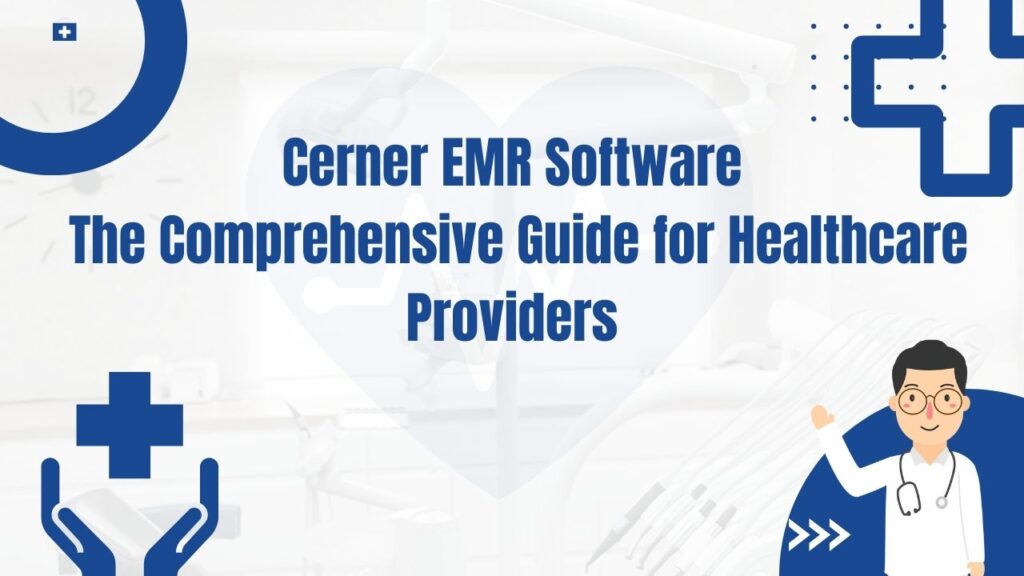In this article, we will take an in-depth look at Cerner EMR software and explore its features, benefits, and drawbacks. Electronic Medical Records (EMRs) have become an indispensable part of modern healthcare facilities. Among the plethora of software available, Software stands out as one of the most comprehensive and efficient options.
What is Cerner EMR Software?
Cerner is a software platform designed to streamline healthcare workflows, improve patient outcomes, and increase operational efficiency. The software is designed to be scalable and flexible, making it ideal for use in large hospitals and small clinics alike. It offers a wide range of functionalities, including patient charting, medication management, order entry, and billing.
The History of Cerner EMR Software
Cerner Corporation, the parent company , was founded in 1979 by Neal Patterson, Paul Gorup, and Cliff Illig. The company’s first product was a laboratory information system, but it soon expanded its offerings to include EMR software. Today, Cerner Corporation is one of the largest healthcare technology companies in the world, with over 27,000 employees and a presence in 35 countries.
Features of Cerner Software
Cerner software offers a wide range of features designed to improve patient care and streamline healthcare workflows. Here are some of the key features of the software:
Patient Charting
Cerner EMR allows healthcare providers to create and manage patient charts electronically. This feature eliminates the need for paper-based charting and makes it easy to access patient information from anywhere in the hospital or clinic.
Medication Management
Cerner EMR offers a comprehensive medication management system that includes electronic prescribing, medication reconciliation, and drug interaction checking. This feature helps healthcare providers to reduce medication errors and improve patient safety.
Order Entry
Cerner EMR allows healthcare providers to enter and manage orders electronically. This feature eliminates the need for paper-based order entry and makes it easy to track and manage orders from a centralized location. You can check chirotouch software reviews and its features.
Billing
Cerner offers a comprehensive billing system that includes automated coding, claims management, and charge capture. This feature helps healthcare providers to streamline their billing processes and reduce errors and rejections.
Reporting and Analytics
Cerner includes a robust reporting and analytics system that allows healthcare providers to track key performance indicators, identify areas for improvement, and monitor patient outcomes.
Benefits of Cerner EMR Software
Cerner software offers a wide range of benefits for healthcare providers. Here are some of the key benefits of the software:
Improved Patient Care
Cerner EMR software is designed to improve patient care by providing healthcare providers with access to comprehensive patient information. This feature allows healthcare providers to make informed decisions about patient care and provide personalized treatment plans.
Increased Operational Efficiency
Cerner software streamlines healthcare workflows and eliminates manual processes, reducing the risk of errors and increasing operational efficiency. This feature allows healthcare providers to see more patients in less time, reducing wait times and improving patient satisfaction.
Enhanced Data Security
software is designed to protect patient data and comply with HIPAA regulations. The software includes robust security features, including access controls, encryption, and audit trails, to ensure that patient data is kept safe and secure.
Scalability
software is scalable and can be customize to meet the needs of healthcare facilities of all sizes. The software can be deploy on-premise or in the cloud, allowing healthcare providers to choose the deployment option that best suits their needs.
Drawbacks of Software
While software offers a wide range of benefits, there are some drawbacks to consider. Here are some of the key drawbacks of the software:
Complexity
software is a comprehensive platform with a wide range of features, which can make it complex to use. Healthcare providers may require extensive training to use the software effectively.
Cost
Cerner EMR software can be expensive, particularly for small healthcare facilities with limited budgets. The software may require additional hardware and IT support, which can add to the overall cost.
Customization
While Cerner EMR software is customizable, making changes to the software can be time-consuming and expensive. Healthcare providers may need to hire consultants or IT professionals to customize the software to their needs.
Conclusion
Cerner EMR software is a comprehensive platform design to streamline healthcare workflows and improve patient outcomes. The software offers a wide range of features, including patient charting, medication management, order entry, and billing, and is scalable and flexible, making it ideal for use in large hospitals and small clinics alike. While there are some drawbacks to consider, such as the complexity and cost of the software, the benefits of Cerner EMR software outweigh the drawbacks for many healthcare providers.
FAQs
- How does Cerner EMR software compare to other EMR software options?
- Is Cerner EMR software suitable for use in small clinics?
- Can Cerner EMR software be customize to meet the needs of individual healthcare providers?
- What security features does Cerner EMR software include?
- What kind of training is require to use Cerner EMR software effectively?

